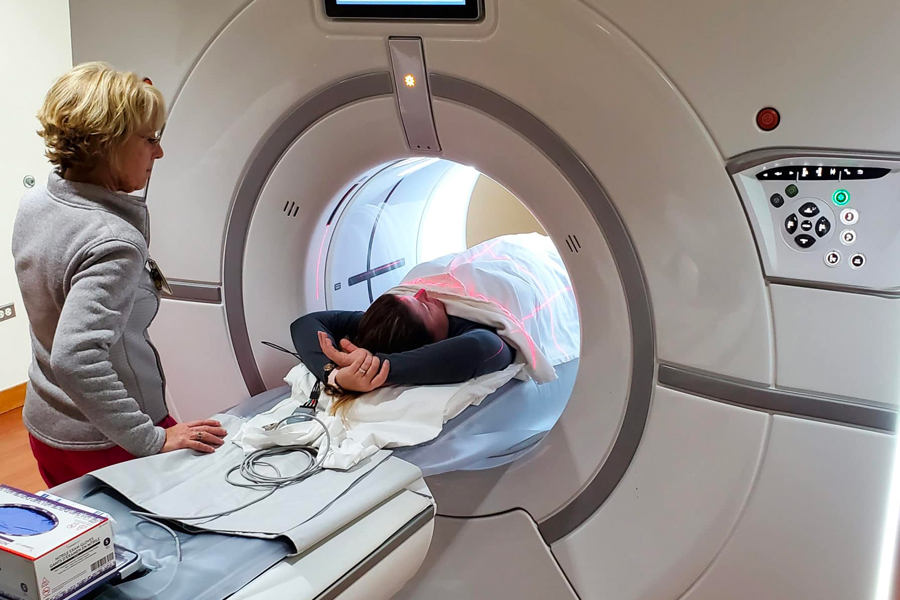Beyond Cholesterol: Exploring The Calcium Heart Score In Heart Health Assessment

Image Source: southdenver.com
Cholesterol has sustained considerable interest within the domain of cardiovascular health. An increased risk of heart disease is correlated with elevated levels of LDL (low-density lipoprotein cholesterol), which has prompted numerous individuals to conscientiously monitor their cholesterol levels via regular blood tests. However, there’s a deeper layer to heart health assessment that goes beyond cholesterol alone. Enter the calcium heart score, a valuable tool in evaluating cardiovascular risk that provides insights beyond what cholesterol measurements can offer.
Understanding The Calcium Heart Score
The calcium heart score, also known as coronary artery calcium (CAC) scoring, measures the amount of calcium deposits in the coronary arteries. Calcifications, which are deposits, serve as an indication of atherosclerosis, a pathological state distinguished by the deposition of plaque within the arterial walls. Unlike cholesterol levels, which indicate the presence of risk factors, the calcium heart score directly reflects the extent of arterial damage caused by atherosclerosis.
Assessing Cardiovascular Risk
While cholesterol levels are certainly important indicators of cardiovascular risk, they do not provide a complete picture. Some individuals with seemingly normal cholesterol levels may still have significant arterial calcifications, putting them at higher risk for heart disease. Conversely, others with elevated cholesterol levels may have minimal or no arterial calcifications and, thus, a lower risk of heart disease. By incorporating the calcium heart score into risk assessment, healthcare providers can more accurately stratify patients based on their actual degree of arterial damage.
Predictive Power
Research has shown that the calcium heart score is a strong predictor of future cardiovascular events, such as heart attacks and strokes. Individuals with higher calcium scores are at greater risk of experiencing these events, even if their cholesterol levels are within normal limits. Hence, the calcium heart score furnishes significant prognostic data that can inform treatment choices and lifestyle adjustments aimed at mitigating cardiovascular risk.
Identifying Hidden Risks
One of the key benefits of the calcium heart score is its ability to uncover hidden risks that may not be apparent based on traditional risk factors alone. For example, individuals with a family history of heart disease or other risk factors may undergo coronary calcium scoring to assess their actual level of arterial damage. This proactive approach allows healthcare providers to intervene early and implement preventive measures before serious cardiovascular events occur.
Tailoring Treatment Strategies
By incorporating the calcium heart score into risk assessment, healthcare providers can tailor treatment strategies to individual patients more effectively. To illustrate, individuals who have elevated calcium levels may experience advantageous outcomes from implementing more assertive interventions, such as lifestyle adjustments or statin therapy, which aim to mitigate the progression of atherosclerosis and forestall subsequent cardiovascular incidents. On the other hand, those with low calcium scores may require less intensive treatment and can focus on maintaining their cardiovascular health through healthy lifestyle choices.
Conclusion
In conclusion, the calcium heart score offers valuable insights into cardiovascular health that go beyond traditional risk factors like cholesterol levels. By measuring the extent of arterial calcifications, the calcium heart score provides a direct assessment of atherosclerotic burden and helps identify individuals at higher risk for heart disease. Incorporating the calcium heart score into routine risk assessment can improve risk stratification, enhance predictive accuracy, and ultimately lead to more personalized treatment strategies. With the ongoing advancement of knowledge regarding cardiovascular risk, the calcium heart score is progressively being recognized as a potent instrument in combating heart disease.




